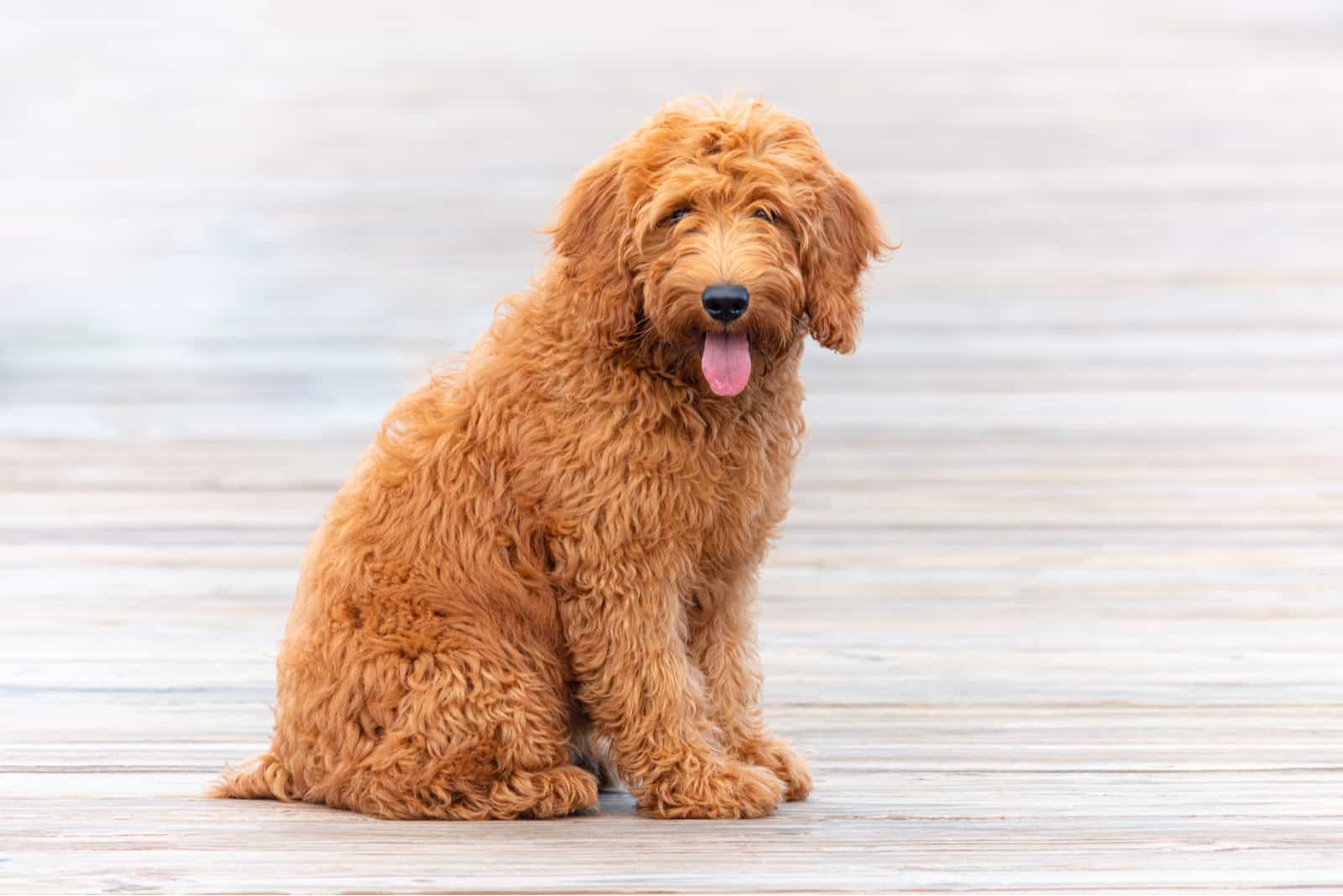What’s intelligent, friendly, and extremely affectionate? A Goldendoodle, of course!
The Goldendoodle is a wonderful dog breed that derives from crossing the Golden Retriever and the Poodle. This cute designer dog has become very popular around the globe.
The latest rankings show that the Goldendoodle designer dog takes fifth place among America’s most popular dog breeds.
If you’re thinking about getting a Goldendoodle yourself, but you are not quite sure how big it will get, you’re at the right place!
In this article, we’re going to go through all three Goldendoodle sizes and their growth curve. We’ll cover the differences between these three sizes, as well as differences between male and female Goldendoodles.
For a better understanding of this topic, we will be explaining what kind of growth factors affect the Goldendoodle puppy’s development. But, that’s not all – we are also going to talk about the Goldendoodle generation types.
Let’s dive into the Goldendoodle growth chart!
Love Comes In All Sizes: Goldendoodle Size Chart
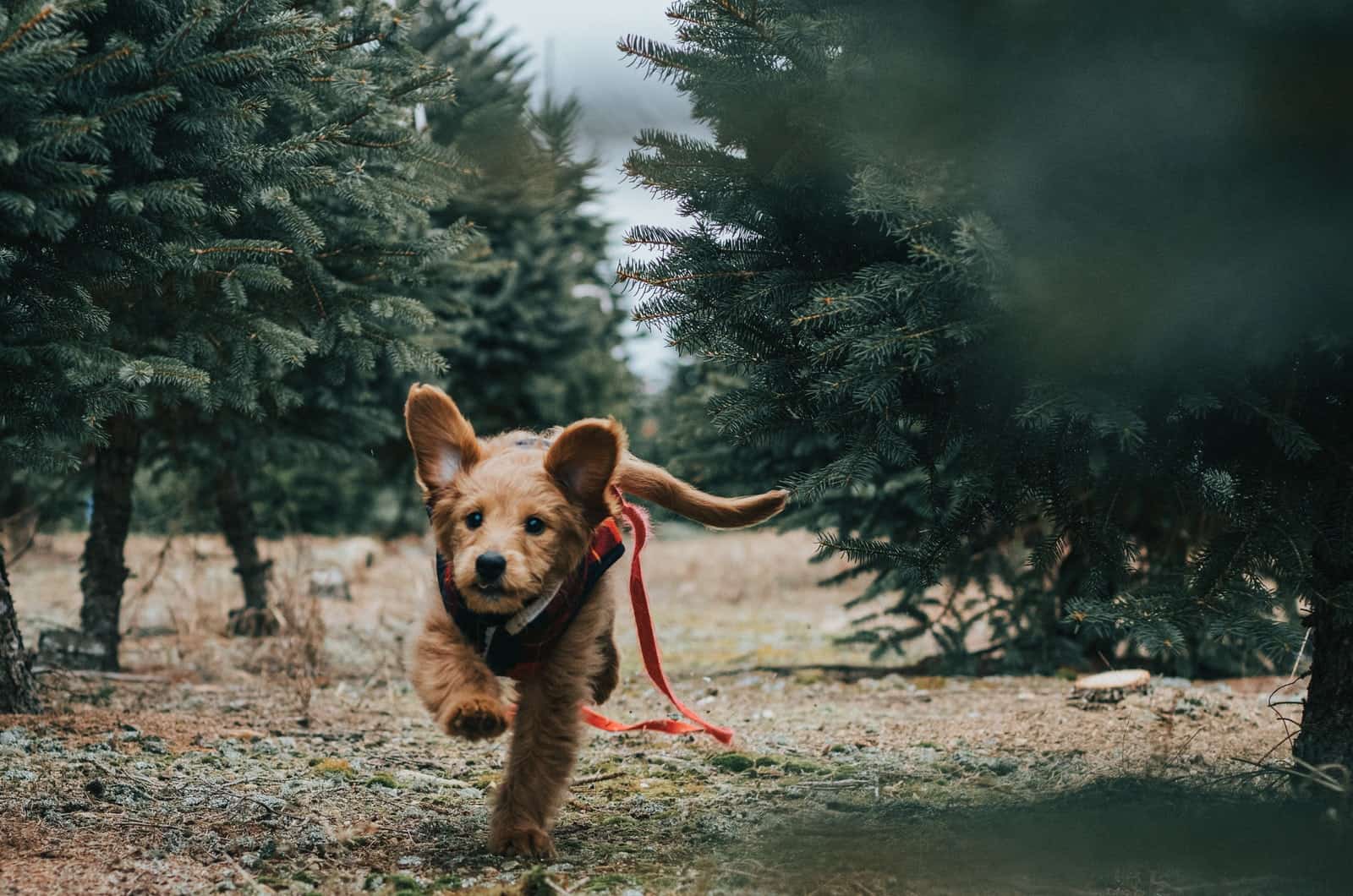
The Goldendoodle mixed breed comes in three sizes. Goldendoodles can be miniature, medium-sized, or standard.
These sizes were developed by breeding a purebred Golden Retriever with a purebred Poodle. And, we know that Poodles come in toy, miniature, and standard sizes.
The medium-sized Goldendoodle is among the most popular. This is because this Doodle is not too large like its Golden Retriever parent breed, and not too small like the Miniature Poodle parent breed.
Taking each Goldendoodle size into consideration, we have come up with three growth charts. All Goldendoodle growth charts will cover both the Goldendoodle puppy’s growth curve and the Goldendoodle adult dog’s growth curve.
Mini Goldendoodle Growth Chart
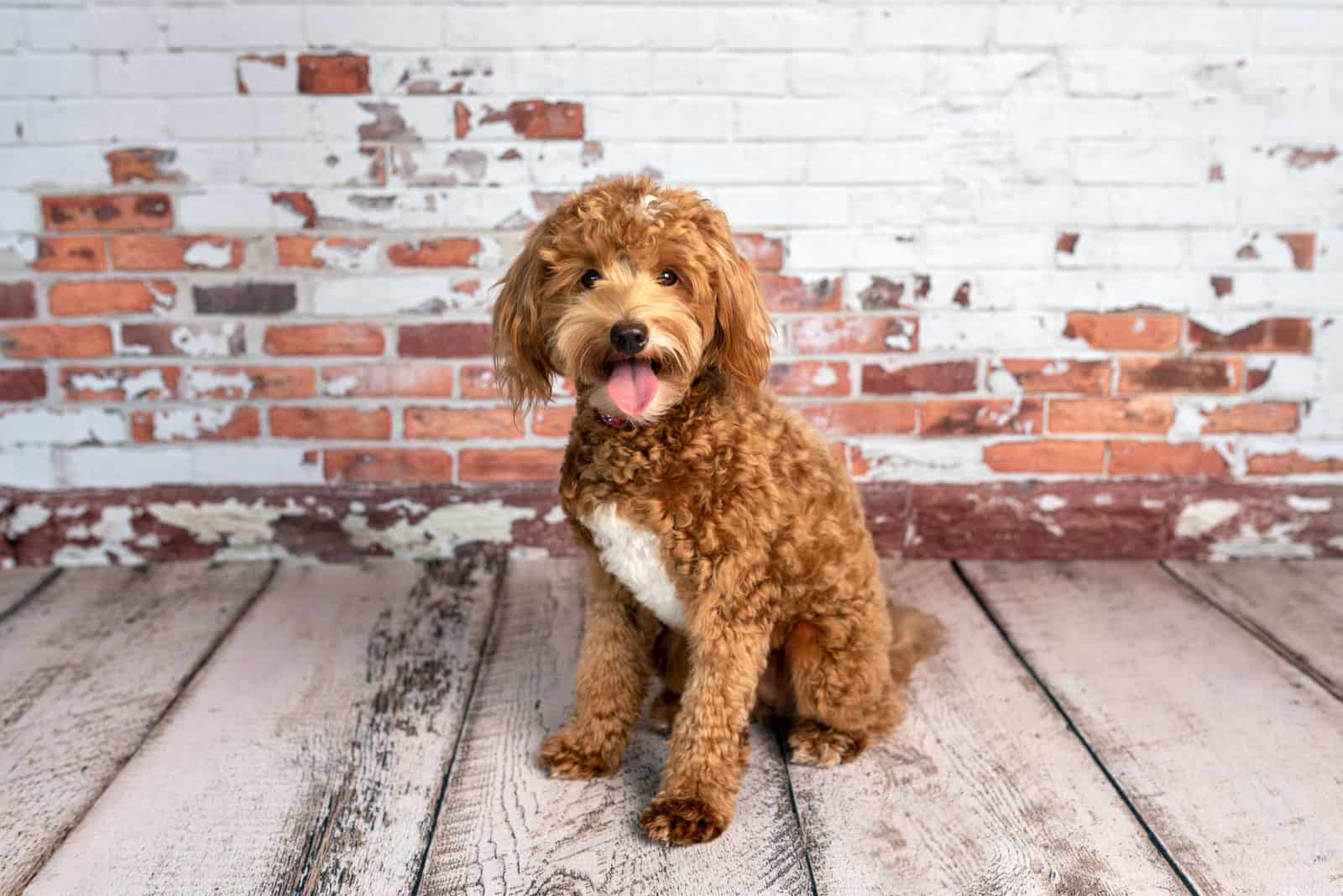
First off, let’s take a look at what kind of mixed-breed a Miniature Goldendoodle is. The Mini Goldendoodle designer dog is a result of crossing a purebred Golden Retriever and a purebred Miniature Poodle. Sometimes, breeders cross Golden Retrievers with Toy Poodles instead of Miniature Poodles to develop even smaller Mini Goldendoodle puppies.
There is a difference in size between the Toy Poodle and the Miniature Poodle – the Miniature Poodle is slightly larger than the Toy Poodle.
So, crossing such a large dog with a small dog will result in an interesting Mini Goldendoodle combination.
Mini Goldendoodle puppy growth chart
Miniature Goldendoodle puppies are the cutest little animals you will see! Their teddy bear appearance is to blame for the massive growth in this mixed breed’s popularity!
At birth, the Miniature Goldendoodle weighs only one pound! Light as a feather during its first days, it soon becomes slightly bigger.
At two weeks of age, the weight of a newborn Mini Goldendoodle doubles – now it weighs two pounds!
The period between three and eight weeks is when its puppy teeth have already emerged, and the Mini Goldendoodle puppy starts being more vocal and restless. A puppy growth spurt is noticeable around this time.
At eight weeks of age, the Mini Goldendoodle puppy will weigh between four and nine pounds. This is the time when breeders prepare their
Mini Goldendoodle puppies for new homes.
It seems that the Mini Goldendoodle puppy keeps growing and growing! But, don’t worry – it surely won’t grow into a Great Dane.
When the Mini Goldendoodle hits 12 weeks of age, this little puppy weighs around 12 pounds.
Four months of age brings along 17 and 19 pounds to the Mini Goldendoodle’s weight! The following months add two to three pounds to its weight.
Just before reaching adulthood, between six and eight months of age, the Mini Goldendoodle puppy will weigh 24 to 26 pounds.
Mini Goldendoodle adult size
At around 11 to 13 months, you will notice a growth stagnation. Congratulations, your Mini Goldendoodle has reached its adult size!
An adult Mini Goldendoodle weighs between 15 and 35 pounds. As for height, these miniature dogs don’t grow so tall. Mini Goldendoodles measure around 13 to 20 inches in height.
You might think “That’s quite a big range”. Well, don’t forget that the Mini Goldendoodle is a combination of a large and a small dog, so it will vary in size!
Mini Goldendoodles are considered adult dogs at the age of one year. This is just an estimate because it can differ from dog to dog.
Medium Goldendoodle Growth Chart
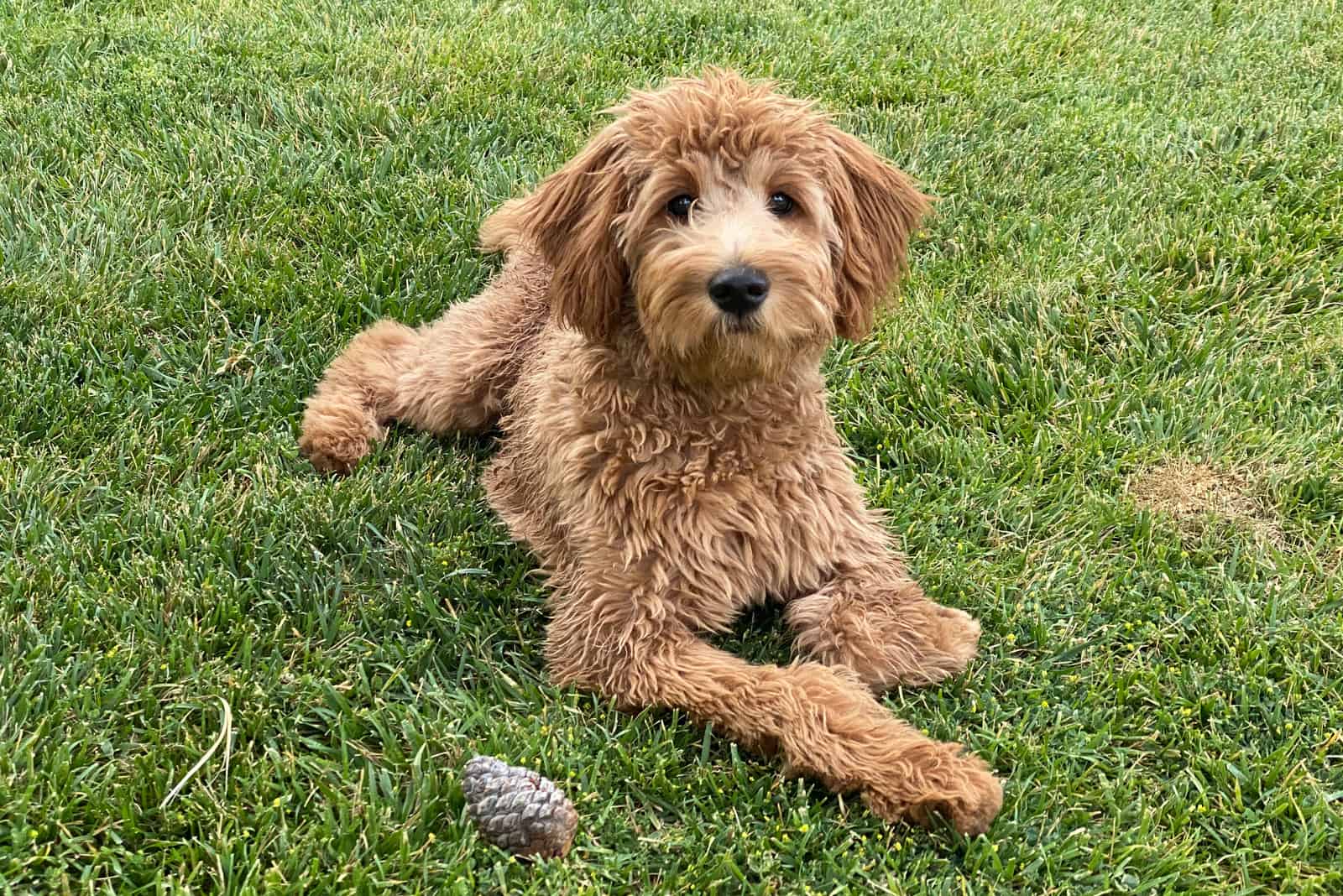
Next up, we have the Medium Goldendoodle dog breed. As the name implies, this is a medium-sized dog.
Most future Goldendoodle dog owners decide to get this one because its size is “just right”.
Small enough to live in small apartments and big enough to receive big hugs – that’s the Medium Goldendoodle!
Think of the Medium Goldendoodle as a fluffy, living teddy bear that you can cuddle with every day!
Read more about the size of a Medium Goldendoodle, and how big this adorable designer dog can get.
Medium Goldendoodle puppy growth chart
Medium Goldendoodle puppies are born just as small as every other puppy. These little guys weigh around one pound at birth. They’re tiny and fragile, but they grow very fast.
Your new puppy will already weigh around two to three pounds after two weeks of age. At eight weeks of age, the Medium Goldendoodle puppy weighs around nine to 15 pounds.
After the eight-week period, things start to escalate real fast. By that, I mean your Medium Goldendoodle puppy starts growing faster than bamboo!
At 12 weeks of age, this little puppy already weighs 20 pounds.
Each month, the Medium Goldendoodle puppy will gain around five pounds, depending on its diet and other factors (we will get to those later in the article).
Upon reaching six months of age, the Medium Goldendoodle puppy starts taking it slow. Its growth rate delays. The puppy is still growing, but not as fast as it was just a month ago.
So, at six months of age, this little pooch should weigh between 30 and 34 pounds.
Comparison-wise, Medium Goldendoodle puppies are usually four to five pounds heavier than Mini Goldendoodle puppies.
Medium Goldendoodle adult size
Adult Medium Goldendoodle dogs are considered mature dogs that have reached their full size.
What characteristics and size these puppies will inherit depends greatly on both parent dog breeds.
Sometimes, the parent breeds can be smaller, so their Doodle offspring will also inherit the gene for a smaller size.
The Medium Goldendoodle puppy reaches adulthood within the first 12 months of age, when it weighs between 30 and 45 pounds on average.
Its height is between 15 and 20 inches, making it the perfect dog for every environment.
Again, these numbers are an estimate because your Medium Goldendoodle’s size will depend on many external and internal factors.
There is also a gender difference in terms of size, so expect male dogs to be larger than female dogs.
Standard Goldendoodle Growth Chart
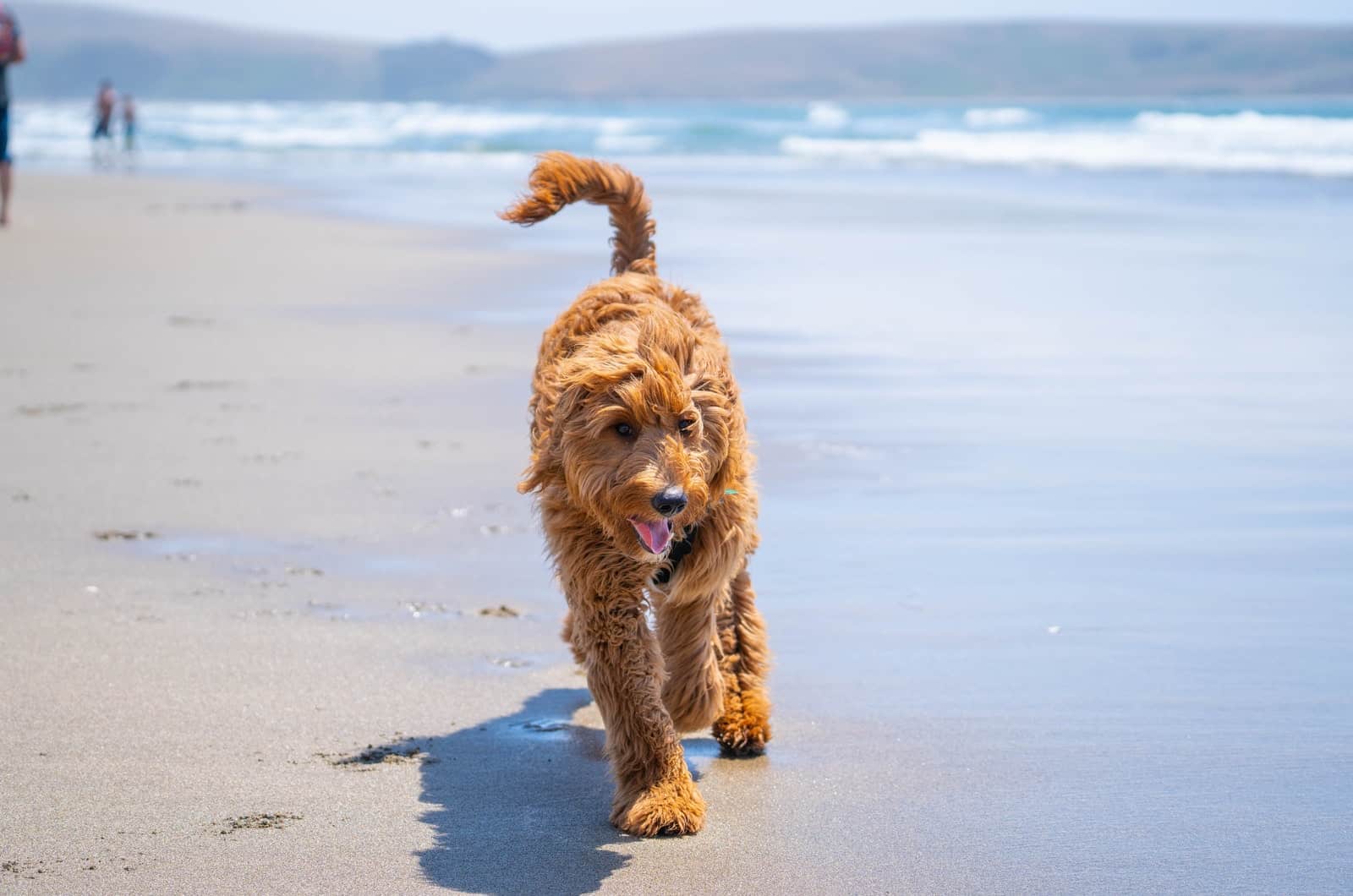
The Standard Goldendoodle is often called the Large Goldendoodle. They are, in fact, the largest of the three Goldendoodle types.
Future dog owners should read the Standard Goldendoodle’s growth chart because this Doodle will need plenty of living space.
Let’s take its parent breeds into consideration. The Golden Retriever parent falls under the large breed of dogs. Although thinner and more athletic, the Standard Poodle also belongs to the large breeds. This means that the Standard Goldendoodle will inherit the large size from both parent breeds.
Standard Goldendoodle puppy growth chart
Standard Goldendoodle puppies are born slightly larger than their miniature and medium counterparts. Newborn puppies weigh around a pound to a pound and a half.
By two weeks of age, they have already doubled in size, starting their growing up journey. You know how large breeds grow very fast – this is also the case with the Standard Goldendoodle. Sometimes, it’s hard to keep up with the puppy’s growth spurt!
Its eight-week birthday brings more pounds! The Standard Goldendoodle puppy’s weight at eight weeks of age ranges between 20 and 22 pounds.
Three months in, the Standard Goldendoodle puppy gains four to five more pounds. After 12 weeks of age, the Standard Doodle puppy will weigh 35 pounds.
Within the first six months, this puppy will weigh approximately 45 pounds. This is the weight of the adult, medium-sized Goldendoodle.
The Standard Goldendoodle doesn’t stop growing yet! Wait until it reaches its adulthood.
Standard Goldendoodle adult size
Most large breeds reach adulthood a bit later than the small- and medium-sized dogs. Some may keep growing and will stop when they reach two years of age. But, mostly, these dogs mature within the first 12 or 14 months of age.
This pooch grows up into a very big and cuddly teddy bear!
A full-grown Standard Goldendoodle will stand at 18 to 22 inches tall, and will be as heavy as 45 to 60 pounds.
Goldendoodle Growth Chart: Male Vs. Female
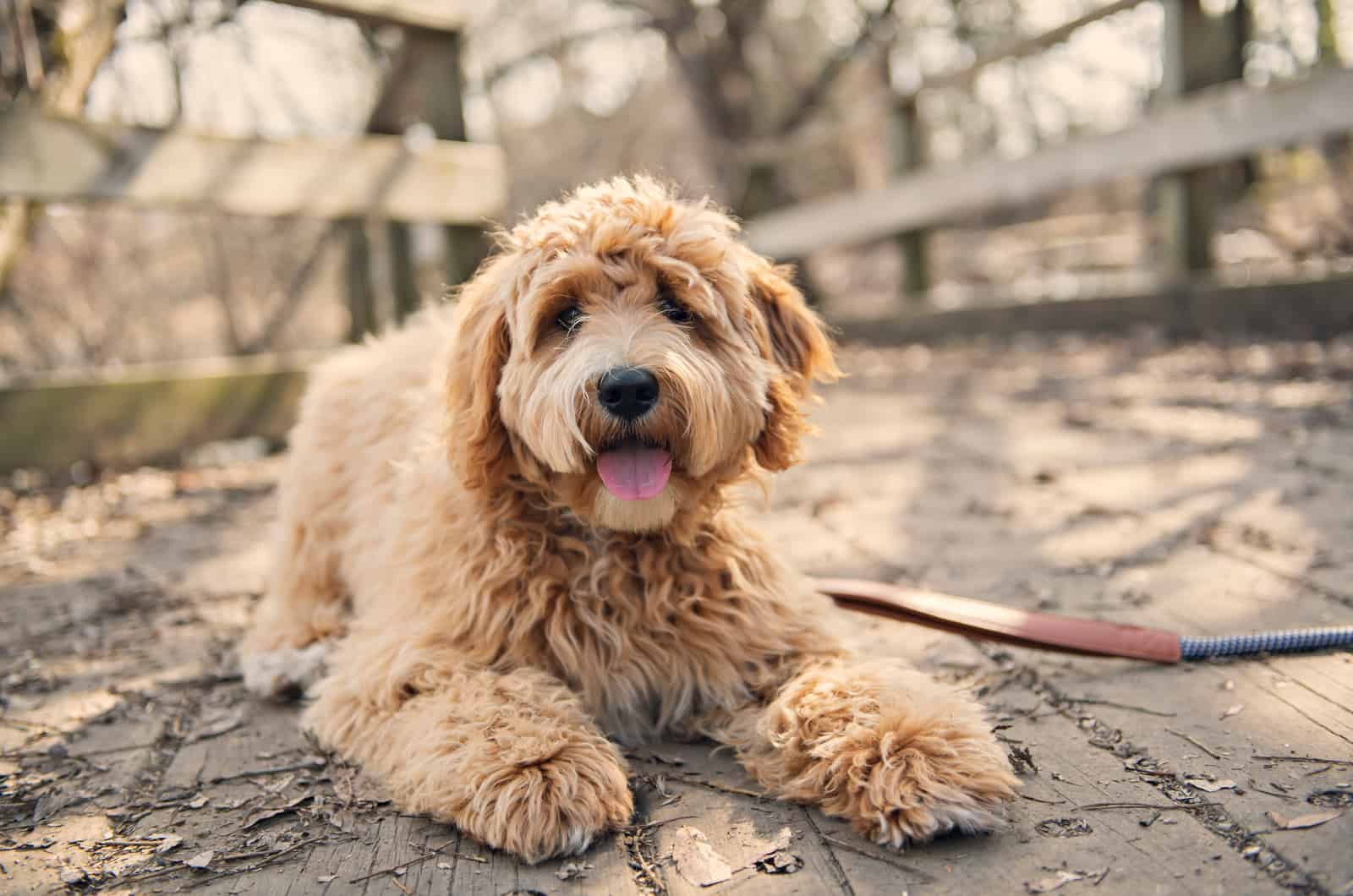
Just like in all mammals, we notice a difference in size between the male adult dogs and the females. Considering this dog breed is a mix of a larger dog (the Golden Retriever) and a small, medium, and large breed (the Poodle), the Goldendoodle will vary in size.
Different growth patterns are noticed throughout the male Goldendoodle’s upbringing. It seems that male puppies grow faster. But, this is not necessarily true.
Male Goldendoodle puppies are born larger than females.
Adult male Goldendoodles are heavier and taller than adult female Goldendoodles. Let’s take the three Goldendoodle sizes into consideration:
Full-grown Miniature Goldendoodle males reach up to 18 inches in height, and usually weigh 20 to 35 pounds. In contrast to that, the female Miniature Goldendoodles weigh 15 to 20 pounds, and their height averages around 15 inches.
Adult Medium Goldendoodle males weigh 45 pounds on average, and measure from 20 to 22 inches in height, depending on the parent breed to which it leans more towards. However, female Medium Goldendoodles are a few inches shorter – 18 to 20 inches to be precise.
Although males are larger and heavier, females still weigh surprisingly close. The female Medium Goldendoodle will weigh between 30 and 40 pounds on average.
The last one is the Standard Goldendoodle adult male that’s usually 20 to 24 inches tall. Some full-grown males weigh around 50 pounds, but if they are larger, they might even weigh up to a whopping 90 pounds. The female Standard Goldendoodles, on the other hand, are lighter, weighing around 40 to 45 pounds. The female adult dogs are also a bit shorter, reaching 17 to 20 inches in height.
Factors Affecting A Goldendoodle’s Growth
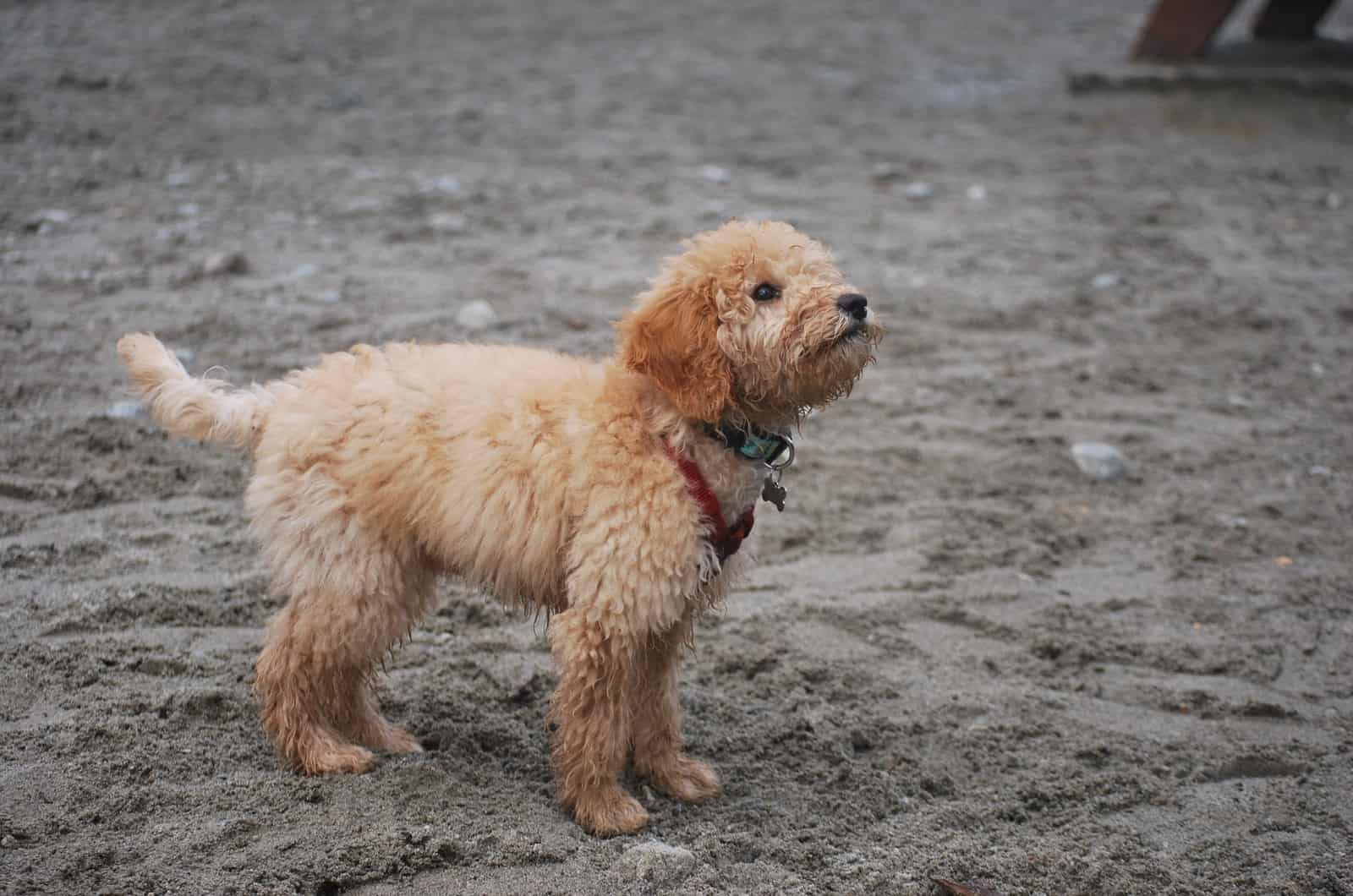
You can’t read a dog’s growth chart without knowing what factors affect its growth! Don’t worry… that’s why we’re here!
Each living organism needs environmental factors such as the sun, water, and air, in order to live a normal life.
Little puppies are very fragile organisms. That being said, they require a lot of care. Negligence in terms of proper housing and feeding practices can lead to abnormal growth.
Let’s see what plays an important role in your Goldendoodle puppy’s development.
Genetics
The reason why we put this factor in the first place on our list is that genes modify everything: physical characteristics, personality traits, and, of course – size!
The subject of genetics is especially important because we’re talking about a mixed breed – the Goldendoodle. This means that the breeders can never surely know what to expect when combining two different dog breeds.
The Goldendoodle puppy might inherit the larger size of the Golden Retriever parent breed, or if the Poodle parent is a larger dog, then the offspring will be a large dog as well.
It seems that most Goldendoodle puppies inherit a curly coat from their Poodle parents. Personality-wise, these dogs seem to have inherited the best traits from both parent breeds.
Breeders definitely knew what they were doing when deciding to combine two wonderful dog breeds. During the first few Goldendoodle dog generations, there were some corrections that had to be made in order to develop a “cleaner” mixed breed.
Thankfully, the development of technology and science brought the breeders some relief. Today, breeders can predict how the newborn Goldendoodle puppy will look. Genetics can be predicted through genomic prediction methods and DNA tests.
Nutrition
“Eat well to live well”, right?
Well, that’s certainly true. Proper food intake means a lot to all beings. From the smallest insect to the biggest animal in the world, everyone needs to eat well.
During the first seconds of their lives, Goldendoodle puppies take milk from their mother. The first milky fluid from the mother is called colostrum.
Not only does colostrum play a very important role in the immune system of a newborn puppy, but it’s an extremely important source of nutrients that help normal growth and development.
So, it’s necessary for a newborn Goldendoodle puppy to take in as much colostrum as possible during its first day of life.
After receiving colostrum, the “normal” milk is produced by the mother, and the puppies start nursing. They will nurse for the next eight weeks until the mother starts to wean them.
After weaning, the Goldendoodle puppies are ready to eat some big puppy food! By that, we mean puppy kibble that is suitable for their age.
This is an important step in the Goldendoodle puppy’s development because now it starts to eat on its own. New owners should pay attention to getting the best puppy food they can find.
Low-quality puppy food is low in vital nutrients and will lead to poor development. If you feed your puppy low-quality dog food, you definitely won’t see any progress in its growth curve.
The Goldendoodle’s weight will therefore greatly depend on the quality of dog food. In other words, the dog’s weight is influenced by the nutrients in high-quality foods.
To find out more details about Goldendoodle’s nutrition, check the Goldendoodle feeding chart.
Exercise
You can’t just feed your Goldendoodle without it exercising. If this little guy doesn’t get enough exercise, he’ll definitely become obese.
Golden Retrievers, as well as other members of the Retriever group such as the Labrador Retriever, are often prone to obesity.
Regular exercise doesn’t just prevent obesity. It’s an important part of the Goldendoodle puppy’s development. Just look at yourself when you regularly exercise – you can see some differences in your body, and you can feel strength in your muscles.
That’s also how Goldendoodles feel when they exercise daily. If you want to get a Goldendoodle puppy, you need to be aware of its high energy levels. This is not a dog for those who prefer staying at home rather than going outside.
The Goldendoodle puppy needs daily playtime that consists of running, playing fetch, playing tug of war, and other activities that involve motion.
Activating the muscles in the dog’s body through exercise during early age will make your Goldendoodle very athletic and good looking! Not only that, but regular training and exercise will strengthen the bond between you two!
Spaying and neutering
“Will spaying/neutering affect my puppy’s growth?” This is a frequently asked question among new dog owners.
Yes, it will, IF done too soon.
This is when you will have to do your research thoroughly so you can be informed of the spaying and neutering effects on your little Goldendoodle puppy.
So, let’s see how spaying and neutering might affect the puppy’s growth.
Goldendoodle growth chart: effects of spaying
Spaying is a surgical procedure done on female dogs. It includes the removal of the ovaries and the uterus. The ovaries are responsible for distributing female hormones – the most important being estrogen.
Not only does estrogen play a huge part in the heat cycle, but it’s also the key hormone for secondary sex characteristics. These characteristics are visual traits that only female dogs have (smaller heads, slim and sleek bodies, the ability to nurse, etc.).
With spaying, you’re taking away the ovaries, so you’re also taking away a good portion of estrogen.
If you spay your female dog too early, say, three months of age, there is a big possibility that she will have trouble with further growth and development. Also, most veterinarians will not agree to spaying young female puppies.
It is therefore recommended to spay female Goldendoodle puppies when they grow at least over six months of age.
Spaying is beneficial both to you and your Goldendoodle female dog. Firstly, you will prevent diseases like breast cancer and pyometra from happening. Secondly, neither you nor your female Goldendoodle dog will have to deal with her heat cycles.
Goldendoodle growth chart: effects of neutering
When it comes to neutering male Goldendoodle dogs, it’s quite a similar story like the one we just read about spaying. Except, it takes balls to neuter a Goldendoodle puppy. No, seriously – neutering is a surgical procedure in which the veterinarian removes both testicles from the male dog’s scrotum.
Now, testicles are important organs in a male dog’s reproduction and growth. These organs regulate the secretion and levels of the hormone called testosterone.
Just like estrogen in the female dog, testosterone characterizes the male dog. Thanks to testosterone, male Goldendoodle puppies grow larger than their female counterparts.
Neutering male Goldendoodle puppies that are too young is not a good idea. If you neuter a male dog in the first months of age, he might not ever reach his full size. What also happens is that an early neutered male dog never reaches sexual maturity.
So, consider neutering a male Goldendoodle puppy when he reaches above six months of age. This practice turns out to be the most beneficial to the male dog.
Even if you decide to neuter your Goldendoodle puppy at one year of age or later, you won’t be much later because the dog will have already reached adulthood. The same goes for female Goldendoodles.
Neutering is a good way to prevent male dogs from showing signs that they want to mate, and it also helps prevent testicular and prostate cancer. Most veterinarians will suggest neutering your male Goldendoodle dog if you don’t plan on breeding it.
Explaining The Goldendoodle Generations

Before we get further into this topic, let’s keep in mind that the Goldendoodle puppy is a mixed breed dog. I’m stating this because the Goldendoodle generations are based off of parent breeds’ physical characteristics and personality traits.
Selective breeding of this adorable puppy wasn’t as smooth as it is today. The first Goldendoodle dog appeared in the year 1969. Since then, a lot of attention has been brought to the correct breeding programs of this mixed breed.
You might think, “why do breeders put so much effort in mixing two purebred dogs?” Well, reputable breeders have been doing their best to develop the healthiest Goldendoodle puppies.
To do so, they needed to know which genes from the parent breeds are more dominant and which are more recessive. And, genes are regulators of the Goldendoodle’s growth!
The generations of the Goldendoodle mixed breed might be difficult to understand. That is why we are going to describe each Goldendoodle generation below. After all, it’s best to use some examples so you can understand the Goldendoodle generations better.
Meaning of letters and numbers
Because we’re going to go through five Goldendoodle generations, we need to know what exactly their names mean. You’ll see the letter “F” before a certain number. The letter “F” stands for “filial hybrid”. A filial hybrid is just a fancy way of saying “this dog came from parent breeds with different genetics”
After the letter “F” comes a number. This number can be either 1 or 2 or 3, and so on. What this number means is what generation the Goldendoodle puppy is.
The letter “B” might be confusing to some. To put it simply, “B” stands for backcross. It means that a crossbred Goldendoodle dog can be bred back to the Poodle. This is achieved by breeding the Goldendoodle back with a purebred Poodle.
It’s usually done to enhance the characteristics of one parent breed. But, it might not work for breeding back the purebred Golden Retriever.
Nonetheless, genetics are a huge gene lottery, which makes it so unpredictable!
F1 Goldendoodle
Filial hybrid one – the first generation of the Goldendoodle puppies derived from the purebred Golden Retriever and the purebred Poodle.
Basically, this is a 50:50 combination. So, F1 Goldendoodle puppies can inherit a low-shedding, curly to long coat. But, they can also inherit a heavy-shedding, straighter coat.
F1B Goldendoodle
The F1B Goldendoodle hybrid is developed by breeding the F1 Goldendoodle with a purebred Golden Retriever or a purebred Poodle. Most breeders opt to breed their hybrid with a purebred Poodle because Poodles shed less than Golden Retrievers.
The F1B Goldendoodle isn’t considered a purebred dog, even though one of its parents is a pure breed.
Just because breeders choose to cross it with a purebred Poodle doesn’t necessarily mean that this F1B puppy will inherit the Poodle’s low-shedding coat. There’s still a big chance it will lean more towards the Golden Retriever parent breed.
F2 Goldendoodle
Can you guess how F2 Goldendoodles are developed? Hint: 1+1=2!
If you’ve done the math, the F2 Goldendoodle derives from breeding two F1 Goldendoodles. Crossing two Goldendoodles is really what you call unpredictable. This Goldendoodle puppy litter might have puppies that fully resemble the Golden Retriever or the Poodle, or one that doesn’t resemble a parent breed at all.
Because of many combinations that can occur, most breeders decide not to breed two Goldendoodles.
F2B Goldendoodle
All these numbers and letters have surely got you a bit confused. It’s easy to get mixed up between these generations. But, bear with me.
The F2B Goldendoodle derives from crossing the F1 Goldendoodle with the F1B Goldendoodle. What you’ll get is a Goldendoodle puppy that may resemble one parent breed more. But, it also may be a combination of both.
Because it is difficult to predict this, breeders opt for genetic screening and DNA tests. At least science knows the answer… or does it?
F3 Goldendoodle
The F3 Goldendoodle is a combination of all of the above. It’s a mix and match kind of generation.
There are so many combinations that might come out of it. Here’s a tip on how to distinguish whether the Goldendoodle leans more towards the Golden Retriever – check its coat.
If it sheds more than a Poodle will, then it’s most likely that it has taken more of the Golden
Retriever parent side.
How Can I Predict A Goldendoodle’s Growth?
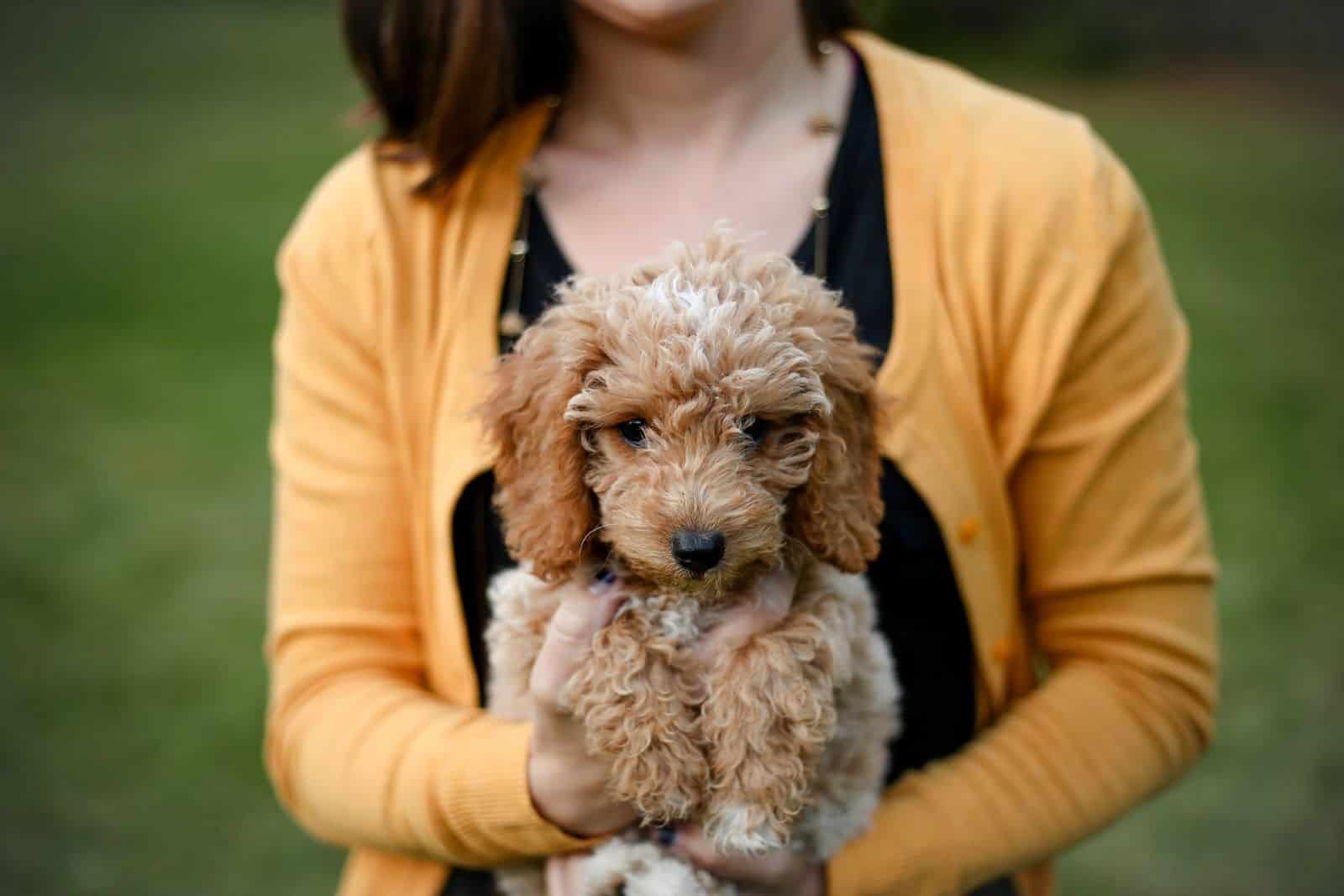
Luckily, there are ways to predict a Goldendoodle’s growth.
If you got your Goldendoodle from a reputable breeder, he will provide you with information about the size of his previous puppies. That way, you can get an idea of how big your Goldendoodle puppy will get.
Another way is to search for a puppy weight calculator online. When you insert the information about your Goldendoodle, the weight calculator will show you an estimated weight.
Or, you can indulge into some math action… if you’re good at it! Try taking an estimated Goldendoodle puppy’s weight from the weight chart (or weigh your Goldendoodle puppy) and divide that by its age in weeks.
Once you get the result, take that number and multiply it by 52. The number 52 stands for the number of weeks there are in a year.
Honestly, I would stick to the weight calculator!
To Sum It Up
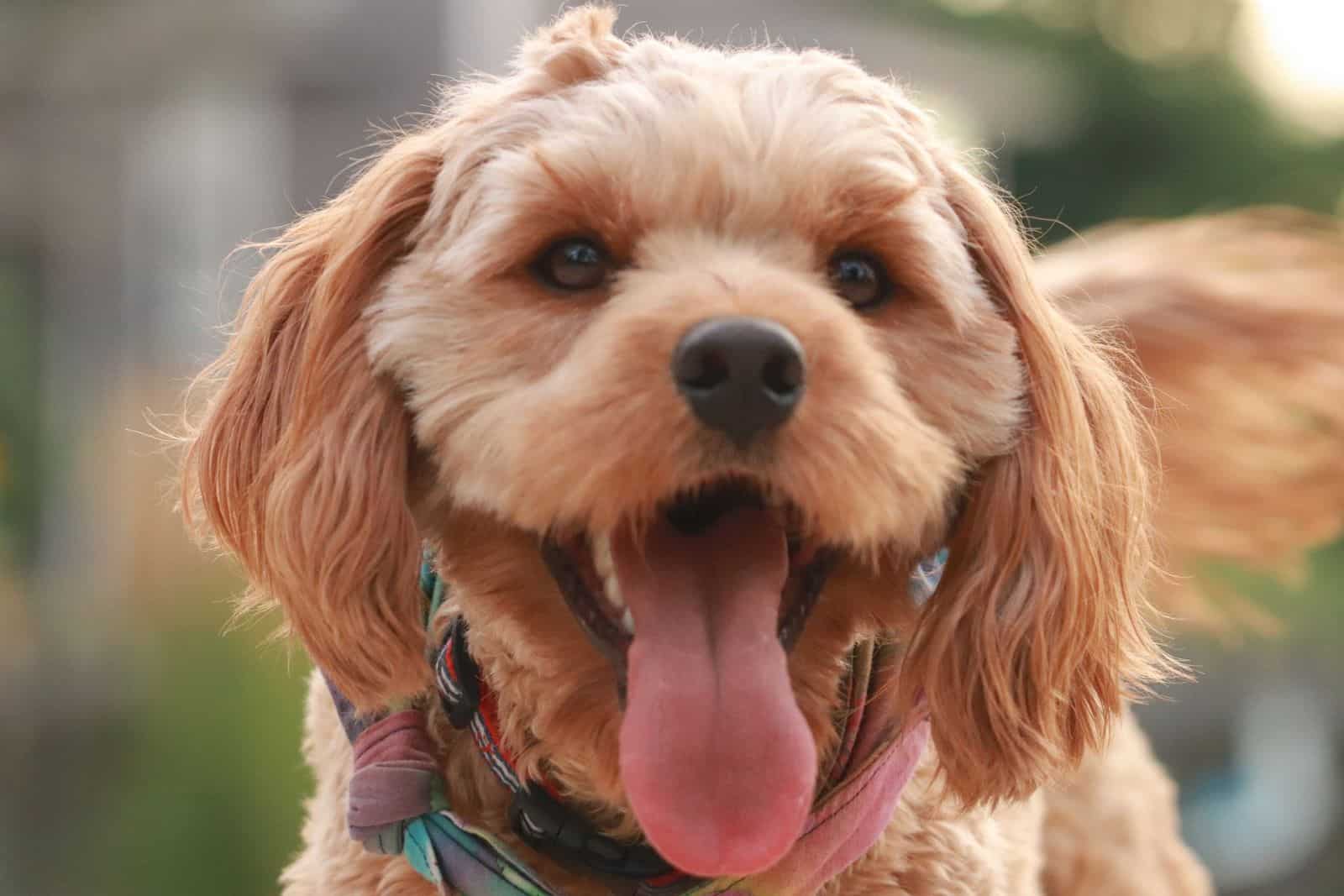
Goldendoodles are wonderful four-legged companions that will bring joy into your life.
Each dog comes with its needs. As a responsible dog owner, you should do your best to provide your new best friend with all the necessities.
If you have decided to get one of these lovely teddy-like pooches, make sure to choose the right sized Goldendoodle for you. After all, you can choose between three sizes of the Goldendoodle mixed breed!
A Goldendoodle growth chart is a great tool to help you get an idea of how big your new Goldendoodle puppy will get.
Keep in mind that mixed breed dogs come in many shapes and sizes, so your Goldendoodle puppy might surprise you with how big or small it will be!
